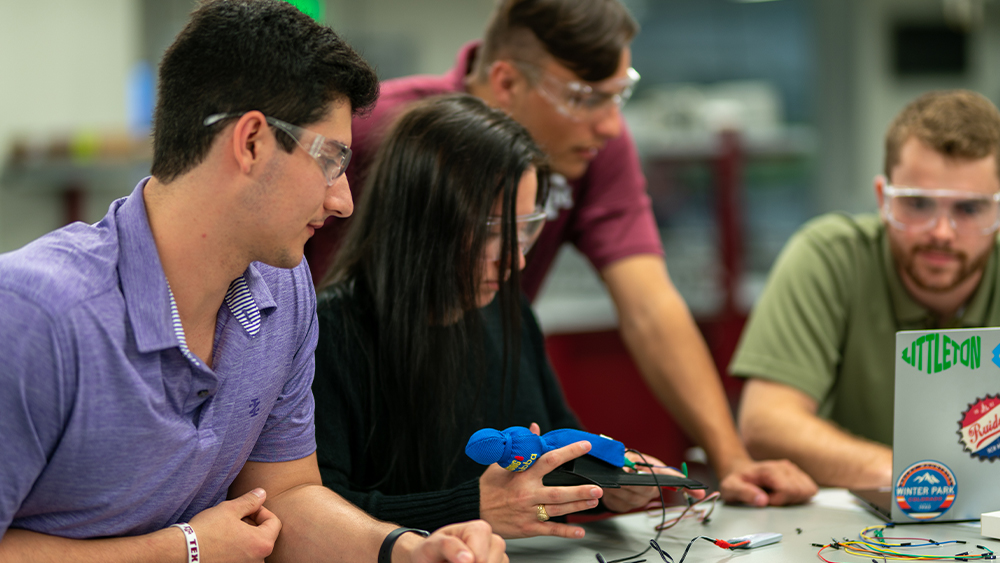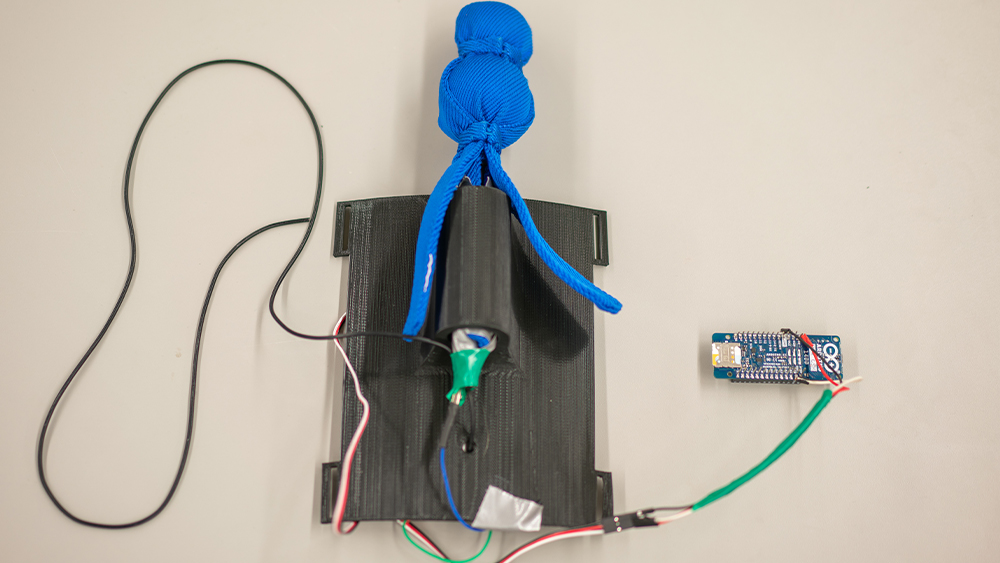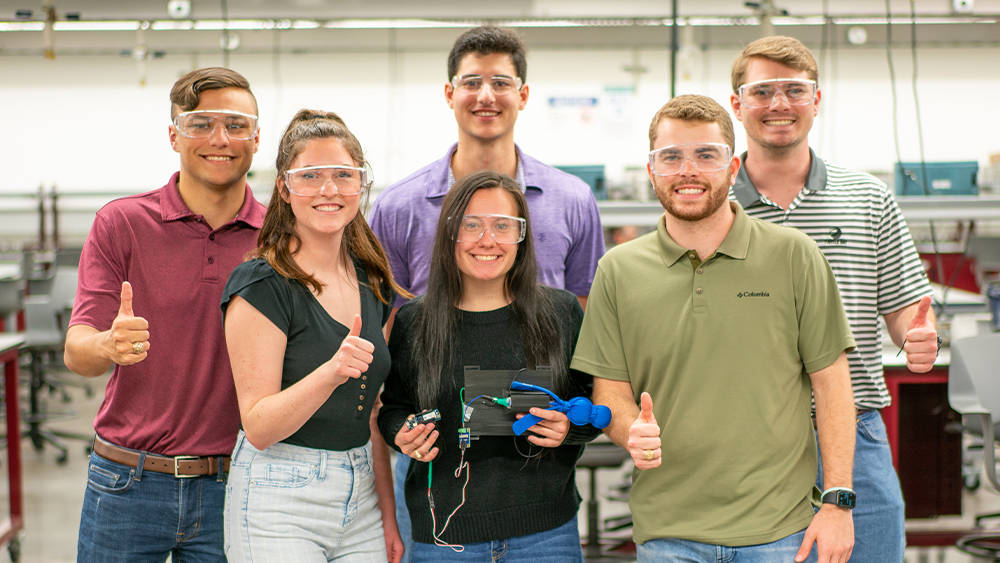
A mechanism designed by a team of Texas A&M University students from the J. Mike Walker ’66 Department of Mechanical Engineering looks to innovatively help those who suffer from seizures by way of a small computer-like device attached to a service dog’s vest. The goal of the design is to send an alert when the user is experiencing symptoms of a seizure.
The project is funded by an endowment from the department’s namesake, Dr. J. Mike Walker. Its inspiration comes from a local family’s teenage son, M.J. Rocha, who needed a better way to alert his family when he may be in danger. After hearing the options for their capstone senior design project, Claire Riordan and her five fellow teammates Lexi Atwood, Garrett Brewer, TJ Chorba, Walker Clayton and Zac Yelich, felt an instant pull toward the assignment.

“Everyone on the team connected with the topic immediately and were excited to be able to help the Rocha family,” said Riordan, who is responsible for the mechanical aspects of the design, as well as team communication. “Right now, our biggest hope is to produce a sturdy and reliable prototype.”
Rocha’s illness causes him to experience frequent seizures. His mother, Tina, and father, Mike, are continually looking for reliable and inventive ways to help. Through technology, they hope their son can live safely, but also self-sufficiently.
“The most rewarding part of this project has definitely been working with the family. Every time we talk to Tina about her experiences with M.J.’s illness, we learn something new and incredible about what they've been able to do,” Riordan said. “Tina has worked for years creating solutions to problems that come up surrounding M.J.’s illness and is constantly looking for ways to make him safer and more independent. Her passion and willingness to dive into this project with us has been wonderful for our team to experience.”
Currently, Rocha wears a biometric watch that operates through Bluetooth technologies connecting to an app on his phone. When he is experiencing symptoms of a seizure, an alert sends to an emergency contact stating his location. This system proved to have several flaws. The watch and phone must be within 15 feet of one another to send an alert. If the phone is dead, if the app malfunctions or if the distance is too far, these could potentially be high-risk situations for Rocha.
With this in mind, the team set out to create a more dependable system for the Rocha family. After months of deliberation, using a small, computer-like device connected to a service dog’s vest yielded the most promising idea.
“We came to this design firstly with help from Dr. Srikanth Saripalli, who helped immensely in answering our questions about circuitry, sensors and microcontrollers. We also really tried to encourage thinking outside of the box, as well as researching other solutions,” said Riordan.

When the handler showcases signs of a seizure, the dog activates the mechanism by pulling on a cord that is a stretch sensor. The stretch sensor connects to a microcontroller that is, in essence, a small computer equipped with a SIM card and GPS capable of alerting the emergency contact of the user’s location.
Some different aspects of the device that the students had to take into account were ease of the mechanism for the dog, ease for the handler and the reliability of the microcontroller. There were many intricate parts of the design that inspired the team to learn new aspects of engineering.
“We worked on the design of the casing, what materials were made of, and how we could assemble it with electronic components. Our members had to do a lot of work to learn quickly about portable methods of sending and receiving signals,” said Riordan.
Although the original intention of this design was to serve the Rocha family, the team hopes their design can be used by others who have similar issues.
“Our team is in the process of exploring options with the Engineering Entrepreneurship program,” said Riordan. “If this a route our team decides to go, we may consider a way to make this product something families everywhere could buy for their service animals.”
For more information about the senior capstone design program or to sponsor a future capstone project, email Dr. Joanna Tsenn at joanna.tsenn@tamu.edu.